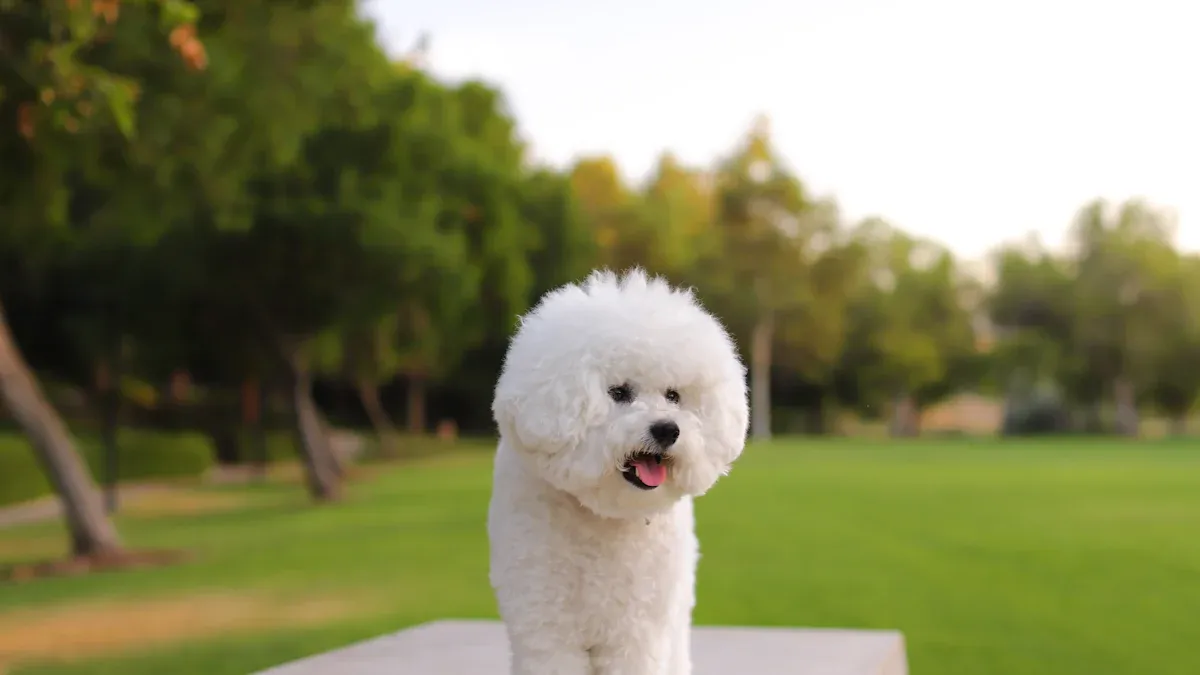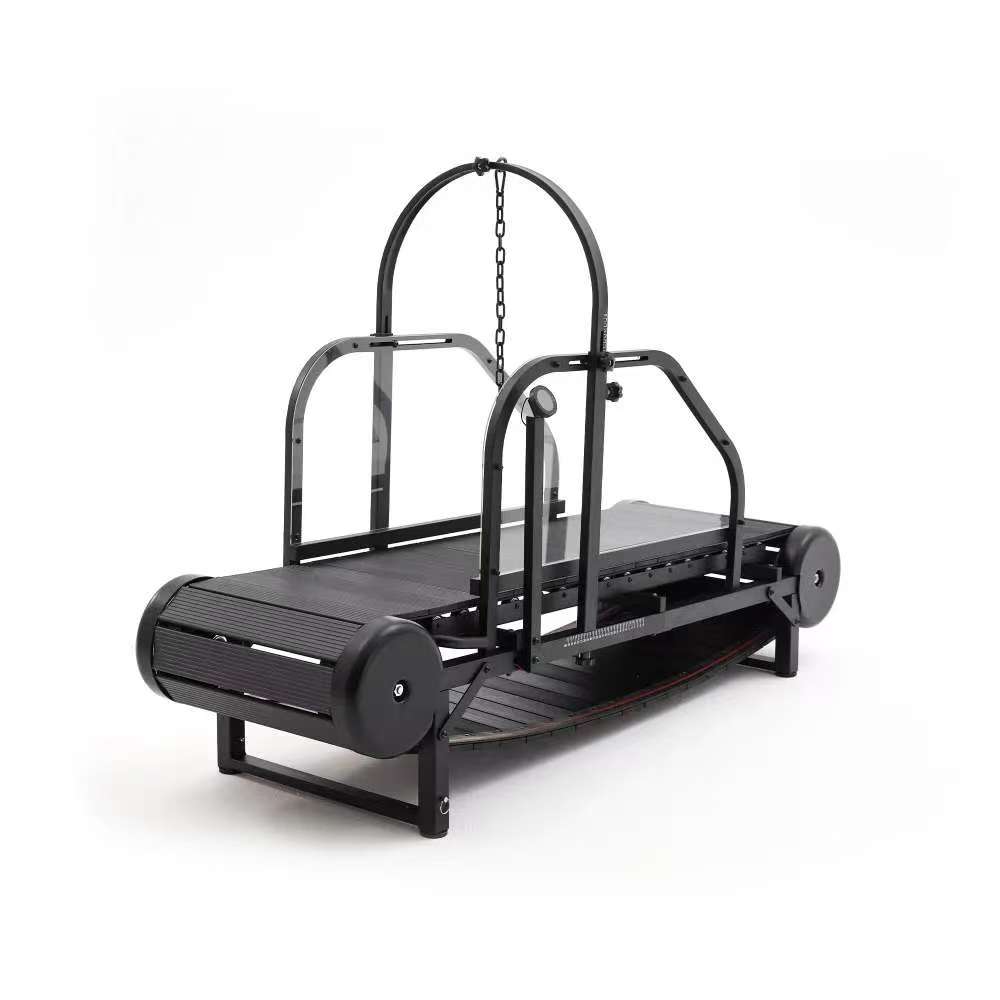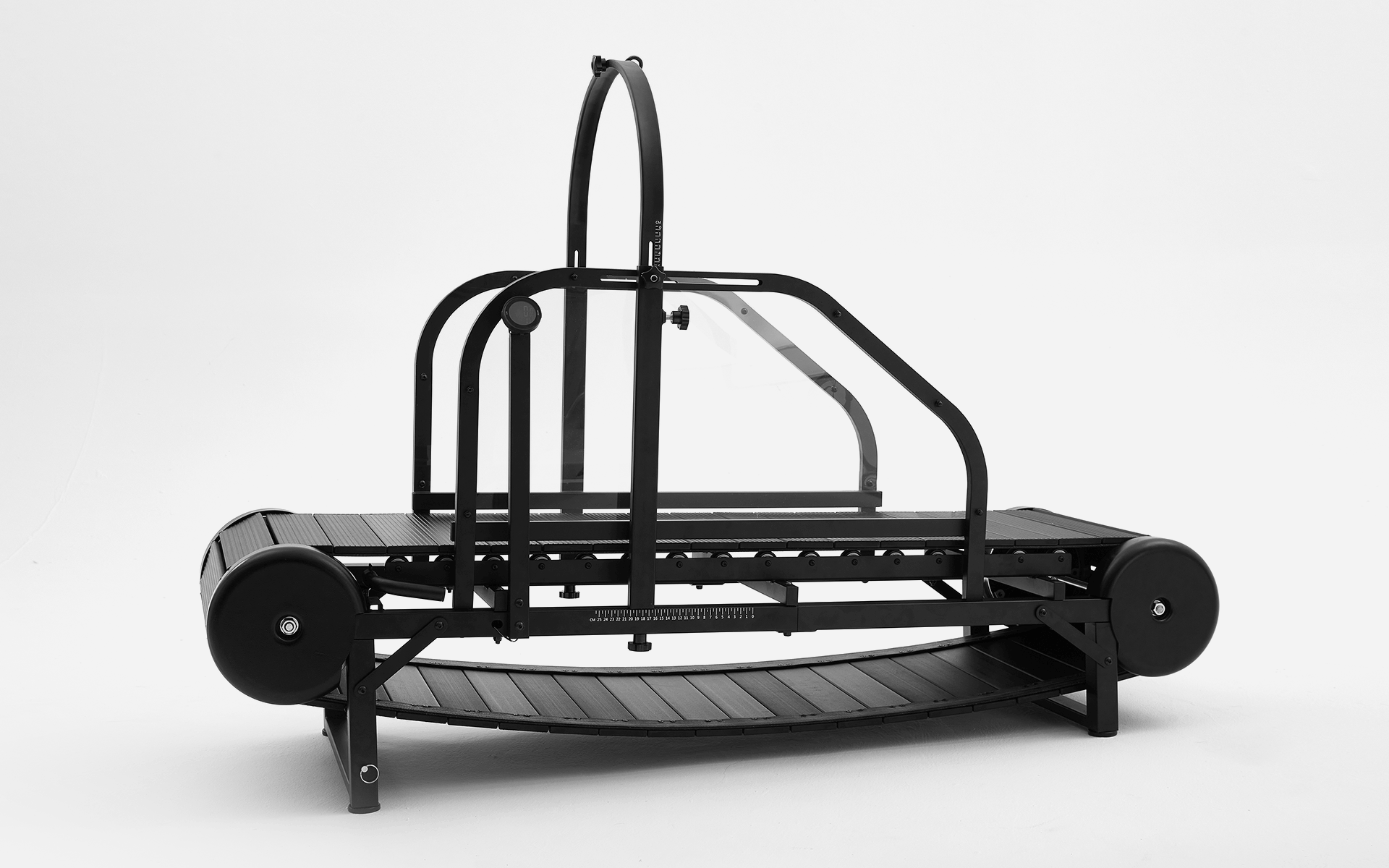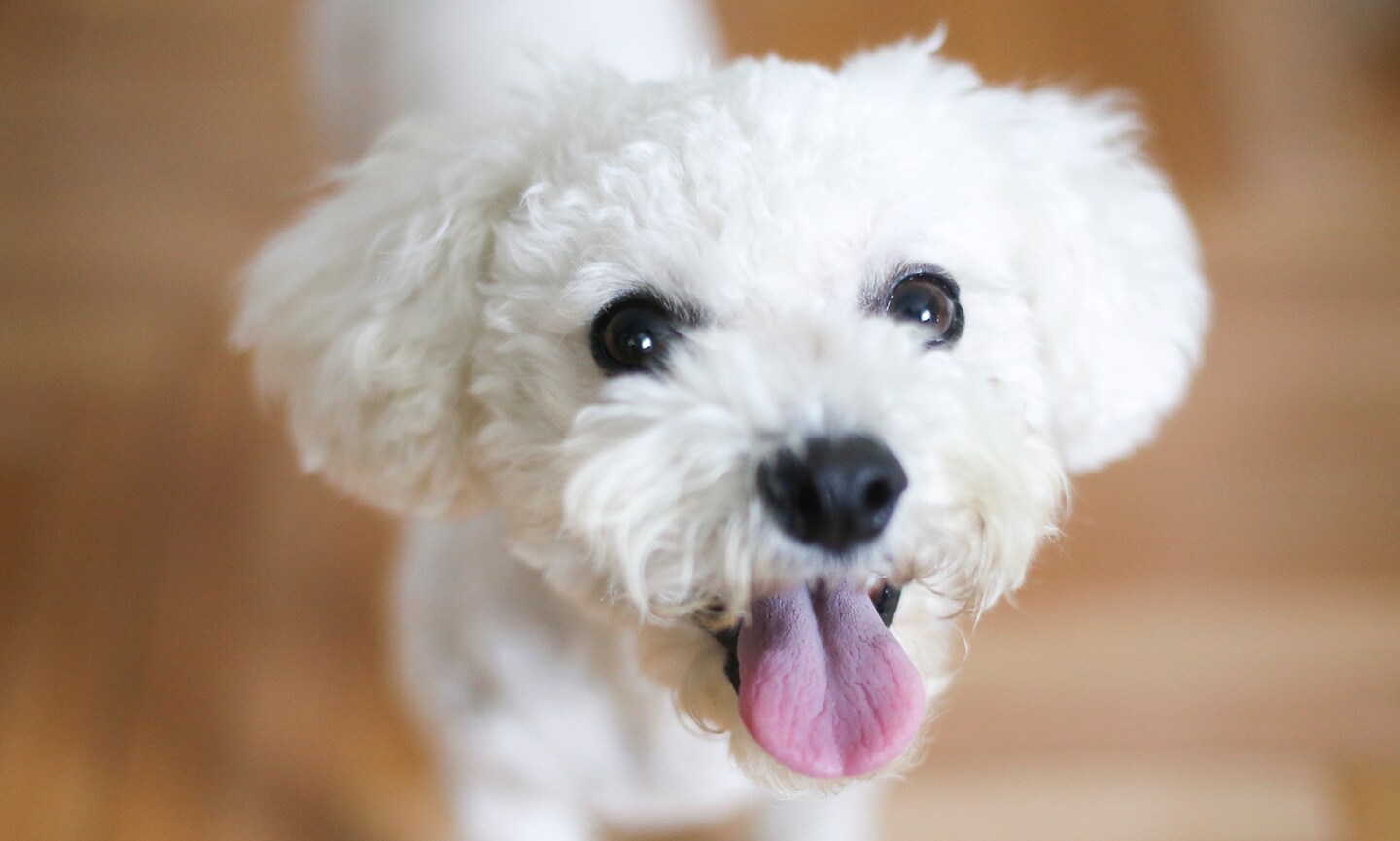Bichons Frises, with their fluffy white coats, cheerful personalities, and endearing black eyes, are one of the most popular small dog breeds around the world. These dogs are known for their friendly nature, intelligence, and love for human companionship. However, like all dogs, Bichons have specific exercise needs that must be met to ensure their physical and mental well - being. A common question among Bichon owners is, “How often should Bichons be walked?” The answer to this question depends on various factors such as age, health, and individual energy levels. In addition, dog running machines for sale have become a practical solution to supplement walks, especially when outdoor activities are limited. In this detailed blog, we will explore the walking frequency for Bichons and the role that dog running machines can play in their exercise routine.
The Characteristics and Energy Levels of Bichons Frises

Bichon Frises are cute little dogs. They have a moderate energy level. They need about 30 minutes to 1 hour of exercise each day. This helps them stay healthy and happy. You can do this with daily walks, playtime, or fun training sessions.
When you walk your Bichon, think about doing several short walks. This is better than fewer long ones. Here’s why:
-
Variety: Short walks let you see different places. This keeps your Bichon interested and excited during their outings.
-
Mental Stimulation: New smells and sights give them mental exercise. Bichons love mental challenges, and different walks help satisfy their curiosity.
-
Easier on Joints: For older Bichons or those with health problems, shorter walks are easier on their joints. They still get the exercise they need.
-
Frequent Breaks: More walks let your Bichon go to the bathroom often. This is especially good for puppies and older dogs.
To help you understand how Bichon Frises compare to other popular breeds, here’s a quick look at their exercise needs:
|
Breed |
Daily Exercise Requirement |
Energy Level |
Exercise Needs Description |
|---|---|---|---|
|
Bichon Frise |
~30 minutes |
Moderate to low |
Laid-back, moderate energy, low exercise needs. Good for busy families or older kids. |
|
Havanese |
~30 minutes |
More energetic |
More energetic than Bichon Frise, needs regular exercise, playful and outgoing. |
As you can see, Bichon Frises need less exercise than some other breeds. This makes them a great choice for families who may not have time for long workouts. Just remember, regular walks are important for their well-being!
How Often Should Bichons Be Walked at Different Stages?

Puppies (Up to 12 Months)
Bichon puppies are full of energy and curiosity, but their growing bodies need gentle exercise. From 8 to 12 weeks old, short play sessions in a safe, enclosed area are sufficient. They don't require formal walks yet, as their tiny legs and developing joints can't handle long distances.
From 3 to 6 months, Bichon puppies can start going on short walks. Aim for 2 to 3 walks per day, each lasting 5 to 10 minutes. These walks should be at a slow pace, allowing the puppy to explore and sniff around, which helps with their socialization and mental development. It's important to avoid over - exercising puppies, as this can lead to joint problems later in life.
From 6 to 12 months, the duration of each walk can be increased to 15 to 20 minutes, with 2 walks per day. At this stage, puppies are more active and can handle a bit more exercise. Incorporating playtime into the walks, such as fetch with a small toy, can make the experience more enjoyable for them. However, it's still important to monitor their energy levels and not push them too hard.
Adult Bichons (1 to 8 Years)
Adult Bichons Frises have a moderate energy level and require regular exercise to stay healthy. They should be walked 2 to 3 times per day, with each walk lasting 20 to 30 minutes. These walks provide not only physical exercise but also mental stimulation as they explore their surroundings, interact with other dogs and people, and sniff new scents.
In addition to walks, adult Bichons benefit from playtime in a fenced yard or indoor games. They enjoy activities like chasing a ball, playing with puzzle toys, or learning new tricks. The key is to keep them active and engaged to prevent boredom, which can lead to destructive behaviors such as chewing or excessive barking.
The frequency and duration of walks can be adjusted based on the individual dog's energy level. Some Bichons may be more active and require longer or more frequent walks, while others may be content with shorter sessions. It's important to pay attention to your Bichon's cues – if they seem restless or full of energy, an extra walk or play session can help burn off that excess energy.
Senior Bichons (8 Years and Older)
As Bichons enter their senior years, their energy levels start to decrease, and they may develop age - related health issues such as arthritis or reduced mobility. The frequency and duration of walks should be adjusted to accommodate these changes. Senior Bichons typically need 1 to 2 walks per day, with each walk lasting 10 to 15 minutes.
The pace of the walks should be slower, and the terrain should be flat and easy to navigate to avoid putting stress on their joints. It's important to monitor senior Bichons closely during walks for signs of fatigue, such as lagging behind, heavy panting, or reluctance to move. If any of these signs are observed, it's time to stop and rest.
In addition to short walks, senior Bichons can benefit from gentle indoor exercises, such as slow playtime or stretching. Swimming is also a great low - impact activity for senior dogs, as it helps keep their joints mobile without causing strain. Regular veterinary check - ups are essential to ensure that their exercise routine is appropriate for their health condition.
Factors Affecting the Walking Frequency for Bichons
When you think about how often to walk your Bichon Frise, many things matter. Knowing these can help you create a good exercise plan for your dog.
Health Condition
Your Bichon's health is very important for their walking schedule. If your dog has health problems, like arthritis or heart issues, you might need to change their exercise plan. Always talk to your vet if you see any changes in how they act or their energy. For example, older Bichons may need shorter and more frequent walks. It’s important to watch how comfortable they are during walks.
Living Environment
Where you live also affects how often you should walk your Bichon. If you live in an apartment, your dog still needs daily walks or playtime in a safe yard. Bichon Frises do well in apartments, but they need regular exercise and mental fun. Here are some things to think about:
-
Apartment Living: Make sure to take your Bichon out for walks several times a day. This keeps them healthy and happy.
-
House with a Yard: Having a yard is great for play. But it doesn’t replace the need for daily walks.
Weather Conditions
Weather can really change your walking plans. Some weather can be unsafe for your Bichon. Here’s a quick look at what to think about:
|
Weather Condition / Factor |
Description / Risk |
Recommended Alternatives or Precautions |
|---|---|---|
|
Temperature around 5°C or less |
Risk of frostbite and hypothermia |
Use dog coats; limit walk duration |
|
Wet or damp weather |
Increases cold sensitivity |
Use waterproof coats; dry dog after walk |
|
Wind chill |
Reduces body heat retention |
Avoid windy walks; use protective clothing |
|
Snow and ice |
Risk of slipping and cold exposure |
Use well-lit paths; avoid frozen bodies of water |
If the weather is too bad, think about indoor activities. Playing games like hide-and-seek or using puzzle toys can give your Bichon both physical and mental fun. These activities keep your dog happy and help you bond.
The Role of Dog Running Machines for Sale in Bichon Exercise

Supplementing Outdoor Walks
Dog running machines for sale can be a valuable tool for supplementing outdoor walks for Bichons Frises. These machines provide a controlled environment for exercise, allowing your Bichon to get physical activity even when outdoor walks are not possible due to bad weather, time constraints, or other reasons.
For example, on rainy days, instead of skipping a walk, you can use a dog running machine to give your Bichon a 10 to 15 - minute workout. This helps maintain their exercise routine and prevents them from becoming restless. Dog running machines are also useful for owners who work long hours and may not have enough time for multiple outdoor walks per day. They can be used in the morning or evening to ensure your Bichon gets the exercise they need.
Low - Impact Exercise Option
Ronzeil running machines are designed with a cushioned surface, which provides a low - impact exercise option for Bichons, especially senior dogs or those with joint issues. The cushioned surface reduces the impact on their joints compared to walking on hard surfaces like concrete or asphalt, making it a safer option for dogs with mobility problems.
Using Ronzeil dog running machine can help keep senior Bichons active without causing pain or discomfort. It allows them to maintain their muscle strength and joint flexibility, which is important for their overall health and quality of life.
Controlled and Safe Environment
Dog running machines offer a controlled and safe environment for Bichons to exercise. Unlike outdoor walks, where there are potential distractions and hazards such as traffic, other dogs, or unfamiliar objects, a dog running machine allows you to monitor your Bichon's exercise closely.
You can control the duration of the workout, ensuring that your Bichon doesn't overexert themselves. This is particularly useful for Bichons that are easily excited or have a tendency to pull on the leash during outdoor walks. The controlled environment also helps build their confidence, especially if they are nervous around other dogs or in new situations.
Mental Stimulation
hile dog running machines are primarily used for physical exercise, they can also provide mental stimulation for Bichons. The novelty of the machine and the focus required to stay on the moving belt can engage their minds. You can enhance the mental stimulation by incorporating training commands during the workout, such as “start,” “stop,” or “slow down.”
Teaching your Bichon to use the dog running machine also provides a mental challenge, as they learn to adapt to the new equipment. This mental engagement is important for Bichons, as it helps keep their minds sharp and prevents boredom.
Tips for Using Dog Running Machines with Bichons
Gradual Introduction
Introducing your Bichon to a dog running machine should be done gradually to ensure they feel comfortable and safe. Start by letting them sniff and explore the machine while it's turned off. Offer treats and praise to create a positive association with the machine.
Once your Bichon is comfortable with the machine, turn it on at the lowest speed and encourage them to step onto the belt. You can use a treat to lure them onto the machine, and once they are on, reward them immediately. Start with very short sessions – just 1 to 2 minutes – and gradually increase the duration as your Bichon becomes more confident.
It's important to never force your Bichon onto the machine or punish them for being hesitant. This can create a negative association and make them afraid of the machine. Instead, be patient and take it slow, allowing your Bichon to adjust at their own pace.
Adjust the Incline and Duration

Once your Bichon knows the treadmill, you can change the incline and duration. A slight incline can feel like outdoor walking and give a better workout. Start with a gentle incline and watch how your dog reacts. Keep the sessions short at first, about 10 to 15 minutes, and slowly increase the time as they get stronger.
Monitoring and Safety
Always monitor your Bichon closely while they are using a dog running machine. Watch for signs of overheating, such as excessive panting, drooling, or red gums. If you notice any of these signs, stop the machine immediately and provide your Bichon with water and a cool place to rest.
Ensure that the machine is placed in a safe location, away from stairs, furniture, or other hazards. Use a harness instead of a collar to prevent strain on your Bichon's neck, and never leave them unattended while using the machine.
Regularly check the machine for any loose parts or damage to ensure it's in good working condition. This helps prevent accidents and ensures that your Bichon's workout is safe and effective.
Making It Fun
To keep your Bichon interested, make treadmill time enjoyable! Play their favorite music or use toys to motivate them. You can even add some training exercises during their treadmill time. This gives them physical exercise and mental challenges. Mixing fun with exercise keeps your Bichon happy and healthy.
Using a treadmill can be a great way to add to your Bichon’s outdoor walks. With these tips, you can make sure your dog enjoys their treadmill workouts while staying safe and active.

In conclusion, walking your Bichon Frise regularly is very important for their health and happiness. Try to give them 30 minutes to an hour of exercise each day. This can be through walks or playtime. A treadmill is also a great way to help your dog stay active. It offers a safe place for them to exercise, especially when the weather is bad. By mixing outdoor walks with treadmill time, you can keep your Bichon healthy and happy. So, let’s get moving and enjoy those walks together!
FAQ
How long should I walk my Bichon Frise each day?
Aim for 30 minutes to 1 hour of exercise daily. You can split this into several short walks to keep your Bichon engaged and happy.
Can I walk my Bichon Frise in bad weather?
You can, but be cautious! If it’s too cold or rainy, consider indoor activities. Use a dog running machine or play games to keep them active.
How can I tell if my Bichon is getting enough exercise?
Watch for signs like a happy demeanor, good energy levels, and a healthy weight. If your Bichon seems restless or bored, they may need more exercise.
Is it okay to skip walks occasionally?
Yes, but try not to make it a habit. If you miss a walk, engage your Bichon with indoor play or mental stimulation to keep them active.









0 Comments